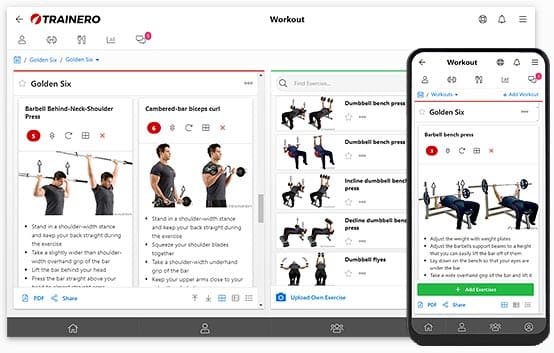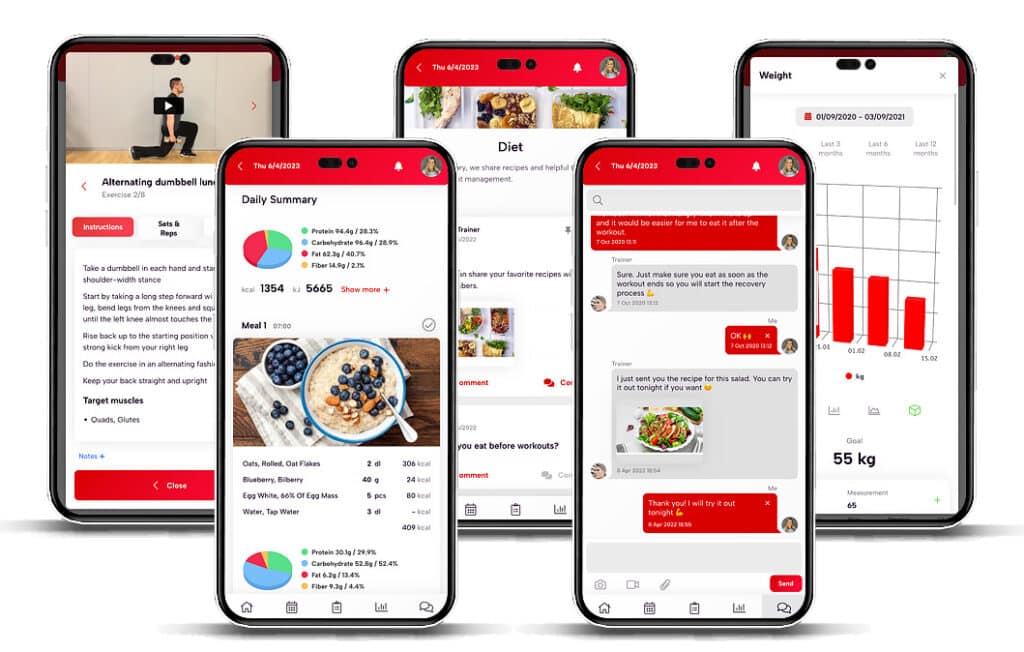Personal Trainer Marketing Success With Google Ads and SEO
Utilizing Google Ads and SEO can significantly enhance the visibility of personal training businesses while ensuring they reach the right target audience. This article delves into how personal trainers can optimize their marketing efforts through these digital marketing tools, thereby growing their personal training business and securing a broader client base.
How Can Personal Training Businesses Optimize Their Google Ads?
What are the best practices for creating effective Google Ads?
Creating effective Google Ads requires a blend of creativity and strategic thinking. Personal trainers should begin by identifying relevant keywords that potential clients might use when searching for personal training services. These keywords should be woven into compelling ad copy that clearly communicates the unique value of the trainer’s services. Incorporating strong calls-to-action (CTAs), such as “Sign Up for a Free Consultation” or “Join Our Fitness Community Today,” can entice potential clients to take immediate action. Additionally, personal trainers should consider A/B testing different ad variations to pinpoint which messages resonate best with their target audience. Regularly reviewing and adjusting ad budgets based on performance will also help in optimizing the return on investment from paid advertising campaigns.
How to target the right audience with Google Ads for personal training?
Targeting the right audience is crucial for the success of personal trainer marketing through Google Ads. Trainers can leverage demographic targeting options offered by Google Ads to reach individuals based on age, gender, and location. For instance, targeting users searching for “trainer near me” can help local personal trainers connect with clients in their immediate vicinity. Additionally, utilizing custom audiences and remarketing strategies allows fitness professionals to re-engage users who have previously shown interest in their services. By effectively narrowing down the target audience, personal trainers can ensure their ads are being seen by those most likely to convert into clients.
What metrics should be monitored to evaluate Google Ads success?
To gauge the success of Google Ads campaigns, personal trainers should closely monitor several key performance metrics. Click-through rates (CTR) indicate how well the ad captures attention, while conversion rates reveal how many clicks lead to actionable outcomes, such as signing up for a training session. Additionally, monitoring the cost-per-acquisition (CPA) helps trainers understand the financial efficiency of their campaigns. Regularly analyzing these metrics enables personal trainers to refine their Google Ads strategy, ensuring they maximize their marketing efforts and budget effectively.
What SEO Strategies Can Personal Trainers Use to Attract More Clients?
How to conduct keyword research for personal training SEO?
Keyword research is the foundation of effective SEO for personal trainers. Utilizing tools like Google Keyword Planner can help identify relevant keywords associated with personal training services. Trainers should focus on long-tail keywords, which often have less competition and are more specific, such as “best personal trainer for weight loss” or “affordable personal training in [your city].” By incorporating these relevant keywords into website content, blog posts, and service descriptions, personal trainers can improve their visibility in search engine results, making it easier for potential clients to discover their services.
What role does local SEO play in personal training marketing?
Local SEO plays a pivotal role in personal trainer marketing, as it helps trainers connect with clients in their geographical area. Optimizing for local SEO involves ensuring that trainers have a consistent presence across online directories, including Google Maps and Yelp. Including location-specific keywords in website content and meta descriptions can enhance search engine rankings for local searches. Furthermore, personal trainers should encourage satisfied clients to leave positive reviews on Google and other platforms, as these reviews not only build credibility but also improve the trainer’s visibility in local search results.
How to optimize your personal training business profile for search engines?
Optimizing a personal training business profile for search engines involves several key strategies. First, trainers should ensure that their website is mobile-friendly and loads quickly, as these factors significantly impact search engine rankings. Incorporating relevant keywords throughout the website’s content, including headlines, subheadings, and alt text for images, will also enhance SEO. Additionally, maintaining an active blog with informative articles related to fitness can establish the trainer as an authority in the field and improve organic search visibility over time. By implementing these SEO strategies, personal trainers can attract more clients through search engine optimization.
How Does Google My Business Enhance Visibility for Personal Trainers?
What are the key features of a Google My Business profile?
A Google My Business profile is an essential tool for personal trainers looking to enhance their visibility online. Key features of this profile include the ability to display business hours, location, and contact information. Additionally, trainers can post updates, share offers, and upload images that showcase their services and training environment. By leveraging these features, personal trainers can provide potential clients with all the information they need to make an informed decision about their services.
How to optimize your Google My Business profile for local clients?
To optimize a Google My Business profile for local clients, personal trainers should ensure that all information is accurate and up-to-date. This includes adding a detailed description of services offered, utilizing relevant keywords, and regularly posting updates or promotions. Encouraging clients to leave reviews on the profile not only builds trust but also improves search rankings. Additionally, using high-quality images of training sessions or facilities can engage potential clients and enhance the overall appeal of the profile.
What are the benefits of using Google My Business for personal trainers?
The benefits of using Google My Business for personal trainers are manifold. Firstly, it significantly enhances online visibility, making it easier for potential clients to find trainers in their area. Secondly, having a well-maintained Google My Business profile can improve local search rankings, driving more traffic to the trainer’s website. Furthermore, the insights provided by Google My Business allow trainers to track how clients are interacting with their profile, offering valuable data that can inform future marketing strategies. Overall, this tool is a vital component of personal training marketing efforts.
Which Digital Marketing Strategies Are Most Effective for Fitness Professionals?
How can email marketing support personal training marketing efforts?
Email marketing is a powerful tool for personal trainers, allowing them to maintain communication with both current and potential clients. By building an email list, trainers can send out newsletters that include fitness tips, promotional offers, and updates on new training programs. Personalizing these emails based on client preferences can enhance engagement and foster a sense of community. Additionally, email marketing can be used to follow up with clients after sessions, encouraging feedback and promoting further engagement with personal training services.
What content marketing tactics can engage potential clients?
Content marketing is a vital strategy for personal trainers looking to engage potential clients. Creating informative blog posts, workout videos, and nutrition guides can position trainers as knowledgeable professionals in the fitness industry. Sharing success stories and testimonials can also help build credibility and attract new clients. By distributing this content on social media and through email newsletters, personal trainers can enhance their reach and establish a loyal following, ultimately leading to increased inquiries and bookings for personal training services.
How to integrate various marketing tools to grow your personal training business?
Integrating various marketing tools is essential for personal trainers aiming to grow their business. Utilizing a combination of Google Ads, SEO strategies, social media, and email marketing can create a comprehensive marketing plan that reaches clients through multiple channels. For instance, trainers can use insights from Google Ads to refine their SEO efforts, while social media can serve as a platform for sharing content and driving traffic to the website. By creating a cohesive marketing strategy that leverages these tools, personal trainers can maximize their outreach and effectiveness in attracting new clients.
What Are the Best Practices for Personal Trainer Marketing to Get More Clients?
How to leverage social media in your personal training marketing strategy?
Social media is a crucial component of personal trainer marketing and offers a dynamic platform to connect with potential clients. Trainers can showcase their expertise by sharing workout tips, client transformations, and motivational content that resonates with their audience. Engaging with followers through live sessions, Q&A segments, and challenges can create a sense of community and encourage interaction. Additionally, utilizing social media advertising can target specific demographics, further enhancing the visibility of personal training services to those who may be looking for a trainer in their area.
What are the common pitfalls to avoid in personal trainer marketing?
While executing a personal trainer marketing strategy, it is essential to avoid common pitfalls that can hinder success. One such pitfall is neglecting to define a clear target audience, which can lead to wasted marketing efforts and budget. Additionally, failing to track and analyze marketing metrics can result in missed opportunities for improvement. Personal trainers should also avoid inconsistent messaging across different marketing channels, as this can confuse potential clients and dilute their brand identity. By being aware of these pitfalls, trainers can develop a more focused and effective marketing strategy.
How to measure the effectiveness of your marketing strategies?
Measuring the effectiveness of marketing strategies is critical for personal trainers to understand what works and what doesn’t. Utilizing analytics tools to track website traffic, conversion rates, and engagement metrics across social media platforms can provide valuable insights. Personal trainers should also solicit feedback from clients to gauge their perceptions of marketing efforts. By analyzing data and gathering client feedback, trainers can adjust their marketing strategies accordingly, ensuring they continue to attract and retain personal training clients effectively.

Unlock your fitness potential with Trainero! Get a 14-day free trial and access personalized workout plans, expert coaching, and progress tracking—all in one app. No commitments, just results. Start your free trial today and take your fitness journey to the next level!











